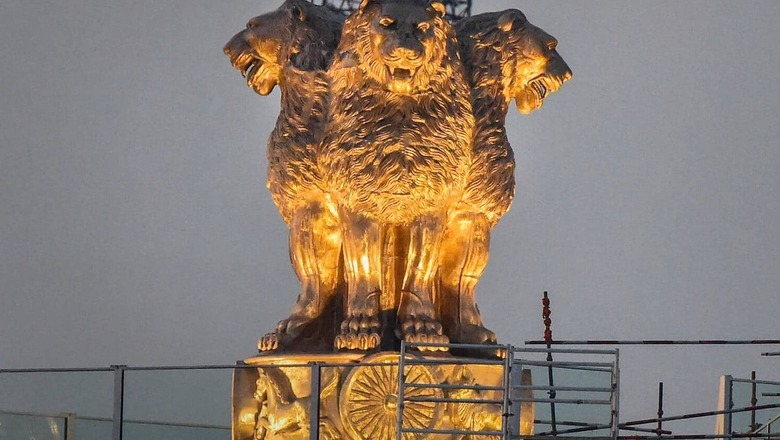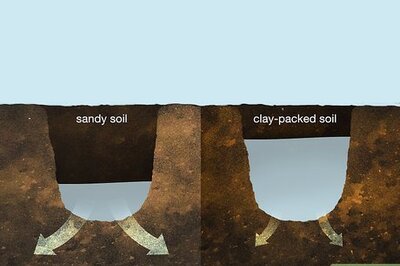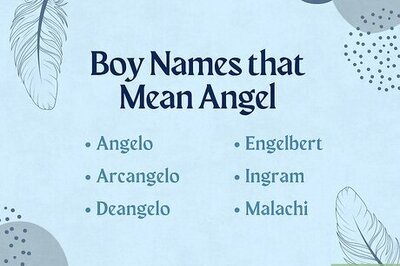
views
The latest flashpoint between the government and the Opposition has a slice of history at its epicentre — India’s national emblem and its alleged “ferocious” makeover.
A fresh row erupted on Tuesday over the national emblem — the Ashok Stambh — atop the new Parliament building, with the opposition accusing the government of giving a menacing look to the sculpture with “muscular, aggressive” lions and insulting the symbol, while the BJP dismissed it as yet another conspiracy to target Prime Minister Narendra Modi.
“To completely change the character and nature of the lions on Ashok’s pillar at Sarnath is nothing but a brazen insult to India’s National Symbol,” AICC General Secretary Jairam Ramesh said.
“The new statue is an adaptation of an ancient sculpture Lion Capital of Ashok at Sarnath in Uttar Pradesh, dating back to 250 BC. Truth be told, transition from Satyameva Jayate to Sanghimeva Jayate has long been completed in spirit,” Trinamool Congress leader Mahua Moitra said.
Hitting back at the opposition, BJP chief spokesperson Anil Baluni said the real reason behind the opposition’s allegation was its frustration over India creating its own Parliament building under PM Modi, replacing the one created by the British over 150 years back. “Opposition parties want to target Modi for one reason or another. It is just a conspiracy to vitiate the atmosphere by misleading people,” he said.
Urban Affairs Minister Hardeep Singh Puri said the bronze cast of the national emblem atop the new parliament building was a scaled-up version of the original Sarnath emblem. “If the Sarnath emblem was to be scaled up or the emblem on the new Parliament building is reduced to that size, there would not be any difference,” said Puri.
As the controversy rages, News18 takes a trip down memory lane to better understand India’s national emblem:
What is a national emblem?
The national emblem encapsulates all that a country stands for. In other words, it is the official seal of the country and the state governments. The national emblem is found on all official government documents, from letterheads to currency notes to passports issued by India.
What is India’s emblem?
India’s national emblem owes its origins to the Lion Capital perched atop the Ashok Pillar in Uttar Pradesh’s Sarnath. When India became a Republic in 1950, the country adopted the Lion Capital in January, identifying the sovereignty and the birth of a new republic state of India.
What is the design and its significance?
The Lion Capital depicts four Asiatic lions sitting next to one another on a cylindrical base with four Ashok Chakras carved on it. The lions represent courage, pride, power and confidence.
The national emblem, in 2D vision, shows only three lions. In the 2D vision, only one Ashok Chakra is visible in the front with a galloping horse, a bull and an elephant. Below the Lion Capital in the national emblem, the country’s national motto ‘Satyameva Jayate’ is written in Devnagiri script, which means ‘Truth alone triumphs.’ The Ashok Chakra symbolises the ‘wheel of Dharma (religion) or law’ in Buddhism. Ashok built Sarnath back in 250 BC and the pillar was known as Ashok Stambh.
Below Ashok Stambh, there are two lions, namely, “Bhadra” and “Vajradatta”. The lions signify strength, courage and honour.
What do the sculptors say about the criticism?
Artist Sunil Deore, the man in charge of sculpting the national emblem atop the new Parliament building, ruled out any distortion and said the lions’ expressions look different as compared to the original Sarnath structure due to the change in perception caused by the angle of view.
“If you look at the Sarnath ‘Lion Capital’ from below, it will look the same as the Parliament emblem does,” Deore told the Indian Express.
“We tried to keep in mind the exact proportions. The original structure is 3 to 3.5 feet high, but the new one is 21.3 feet tall,” he said.
Read all the Latest News, Breaking News, watch Top Videos and Live TV here.


















Comments
0 comment